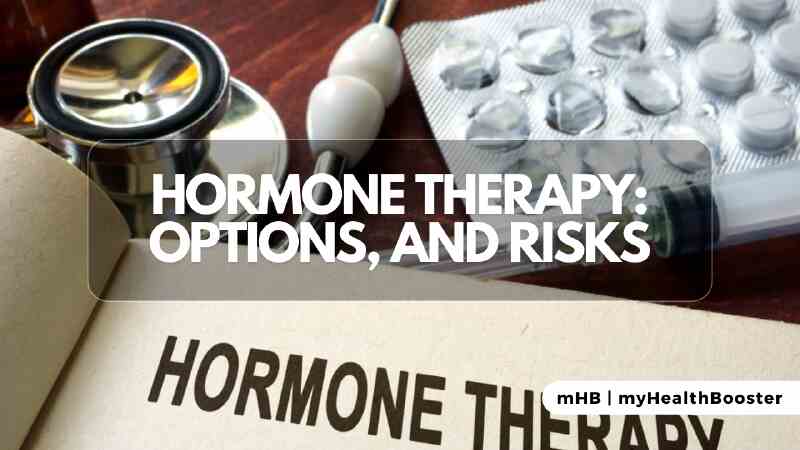Hormone therapy (HT) plays a significant role in managing menopause symptoms, particularly those related to the decline in estrogen and progesterone levels. This article delves into the essential facts about hormone therapy, covering its types, benefits, risks, and considerations for women entering menopause.
What is Hormone Therapy?
- Hormone therapy includes estrogen or a combination of estrogen and progesterone.
- Estrogen therapy effectively addresses menopause symptoms and remains safe when used for less than five years.
Menopause Overview
- Menopause marks the end of menstruation and a decline in estrogen and progesterone production.
- Symptoms include hot flashes, sleep disturbances, vaginal dryness, and mood changes.
Bone Health and Estrogen
- Menopausal estrogen decline contributes to rapid bone loss, potentially leading to osteoporosis.
- Osteoporosis weakens bones, making them prone to fractures.
Types of Hormone Therapy
- Estrogen therapy (ET) is administered alone, while estrogen/progestin therapy (EPT) combines both hormones for women with a uterus.
- Various forms, including pills, patches, creams, and vaginal preparations, offer flexibility based on symptoms.
Side Effects and Risks
- Minor side effects may include headaches, nausea, and breast pain, with persistence leading to adjustments in hormone therapy.
- Serious risks involve increased clotting risk, uterine cancer, breast cancer, heart disease, and stroke.
Long-Term Use Concerns
- Prolonged oral hormone therapy increases the risk of breast cancer, heart disease, and stroke.
- Hormone therapy does not prevent heart attacks, as revealed by recent Women’s Health Initiative research.
Vaginal Preparations and Safety
- Vaginal tablets, creams, and rings provide localized estrogen treatment for symptoms like vaginal dryness.
- Safety concerns regarding uterine cancer, heart disease, and breast cancer remain uncertain.
Bioidentical Hormone Therapy
- Bioidentical hormone therapy, with hormones matching those naturally produced, raises interest.
- Safety and effectiveness studies for these compounded products are lacking.
Appropriate Candidates for Hormone Therapy
- Women with severe hot flashes disrupting sleep may benefit from short-term hormone therapy.
- Those at risk for or diagnosed with osteoporosis should explore non-estrogen options.
Caution and Contraindications
- Women with a history of breast or uterine cancer, abnormal vaginal bleeding, or deep vein thrombosis should approach hormone therapy cautiously.
- Migraines, liver disease, and coronary artery disease require tailored hormone therapy choices.
Conclusion
Understanding hormone therapy involves weighing the benefits against the risks, considering individual health factors, and exploring alternatives. Women entering menopause should engage in informed discussions with healthcare providers to make personalized decisions about managing symptoms and maintaining overall health. Regular health check-ups and open communication contribute to safer and more effective hormone therapy outcomes.
References
“Hormone therapy”
American College of Obstetricians and Gynecologists
